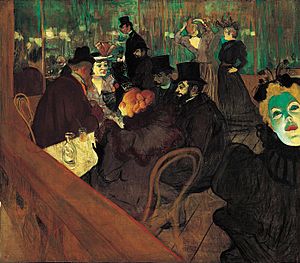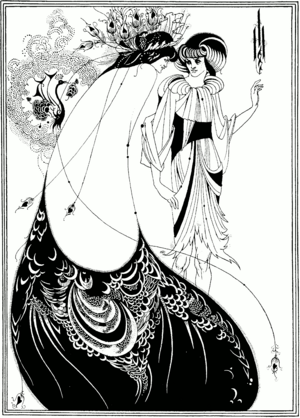Fin de siècle facts for kids

Fin de siècle is a French phrase that means "end of the century." It is often used to describe the time around the year 1900. More than just a date, it describes a special feeling and way of thinking that was common at the end of the 19th century.
People at this time felt like an old era was ending and a new one was about to begin. There was a mix of feelings: some people felt things were getting worse, while others felt excited about new beginnings. This period was known for new ideas in art, culture, and how people behaved.
What was the Fin de siècle Spirit?
The "spirit" of the fin de siècle refers to the main cultural ideas of the 1880s and 1890s. Many people felt a sense of pessimism, which means a feeling that things would turn out badly. There was also a belief that modern life and civilization were leading to a kind of decline or "decadence."
People started to question old ways of thinking. They wanted to move away from ideas that focused only on facts and logic. Instead, they were interested in feelings, art, and new ways of seeing the world. This was a time of big changes in how people thought about society and art.
New Ideas in Literature
The fin de siècle period brought many new and interesting ideas to literature. Writers explored deep feelings and challenged traditional ways of telling stories. Here are some famous examples:
- Fyodor Dostoyevsky: His book The Brothers Karamazov explores complex human emotions and ideas about good and evil.
- Friedrich Nietzsche: In Thus spoke Zarathustra, Nietzsche shared new philosophical ideas that made people think differently about life and values.
- Oscar Wilde: His play Salomé is known for its unique style and dramatic themes, showing the artistic trends of the time.
Images for kids
-
Arthur Schopenhauer, a German philosopher whose ideas influenced the fin de siècle culture.
-
Irish writer Oscar Wilde, known for his unique style and wit.
-
The Scream (1893) by Edvard Munch, a famous painting that shows the strong feelings of the fin de siècle era.
See also
 In Spanish: Fin de siècle para niños
In Spanish: Fin de siècle para niños





